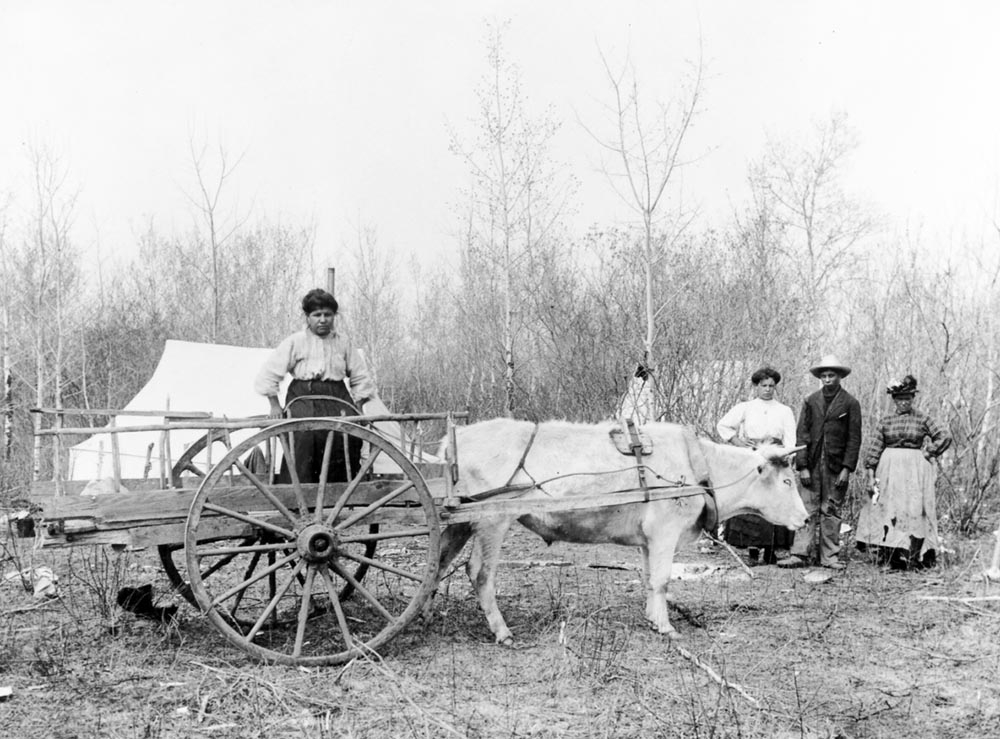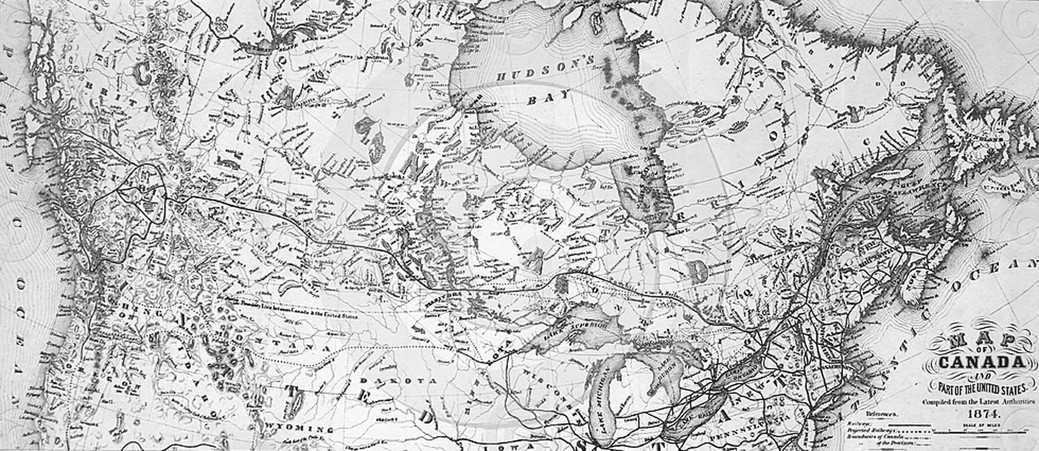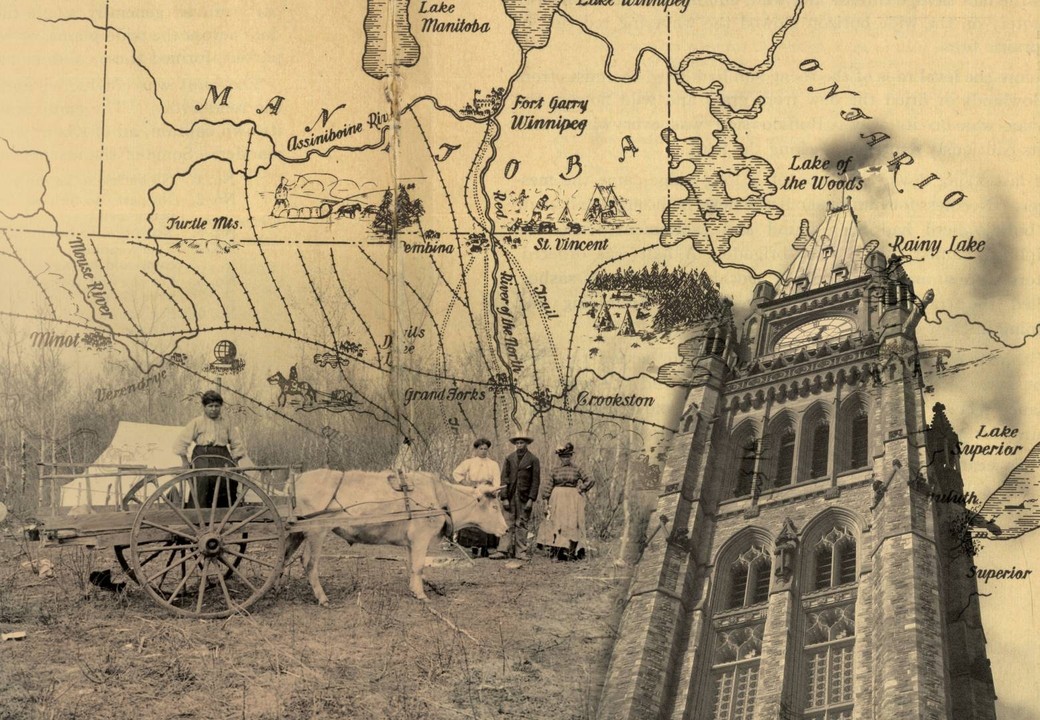
Who are the Métis?
For generations, the Métis Nation has struggled for recognition and justice in the Canadian federation. In 1982, the existing Aboriginal and Treaty rights of the Aboriginal peoples in Canada were recognized and affirmed in s. 35 of the Constitution Act, 1982. This was a watershed for the Métis Nation, with the explicit recognition of the Métis as one of the three distinct Aboriginal peoples in Canada.
Since 1983, the Métis National Council (MNC) has represented the Métis Nation nationally and internationally. It receives its mandate and direction from the democratically elected leadership of the Métis Nation’s governments from the five westernmost provinces. Its key goal is to secure the position of the Métis Nation within the Canadian federation.
The current leader of the Métis National Council is Clément Chartier. First elected in 2003, Chartier is currently serving his fourth term as leader. A citizen of the Métis Nation, he was born at Ile a la Crosse in Northwest Saskatchewan and raised in the nearby Métis community of Buffalo Narrows. He is a lawyer, writer, lecturer and activist and has served in both political and administrative capacities with numerous Indigenous peoples organizations nationally and internationally. Chartier is best known for his work on Métis and Indigenous rights. Like Louis Riel and the other Métis leaders before him, Clement Chartier has pushed the Métis Nation’s rights agenda and has strengthened the Métis Nation from its core. His goal during the next few years is to move the Métis Nation closer to settling outstanding Métis rights to land and self-government.
The Métis story is as fascinating and complex as the Métis themselves. Just who are they? The MNC defines the term Métis as “A person, who selfidentifies as Métis, is of historic Métis Nation Ancestry, is distinct from other Aboriginal Peoples and is accepted by the Métis Nation.” Think of it this way. The Métis heritage is a result of the coming together and fusion of two very distinct cultures, European and First Nations.
People of mixed ancestry began appearing in Canada following the first interactions between eastern Indigenous peoples and Europeans. Samuel de Champlain told First Nations leaders, “Our young men will marry your daughters and we shall be one people.” Marital unity between the two cultures quickly became a part of state and church policy to assimilate the Aboriginal population. However, while there were mixed marriages in the eastern parts of Canada, it was on the western plains where the Métis people emerged as a New Nation during the latter part of the 18th century.
In the fur trade settlements of the historic Northwest, the Métis married amongst themselves and developed a unique culture of their own that combined European and Aboriginal traditions. Their knowledge of both languages and familiarity with both cultures made them essential intermediaries and key players in the early fur trade economy of western Canada. The commercial fur trade organized a transport system that moved commodities and food supplies across the grasslands, parklands and the northern bush, with eventual export of furs to the world market in London. The Métis were the backbone of this trade, serving as traders, boatmen, freighters, farmers, interpreters and buffalo hunters.
 In 1811, the Hudson’s Bay Company granted land to Lord Selkirk from Scotland to colonize in the Red River Valley of today’s southern Manitoba. The Métis feared that the Scottish settlers would disrupt their economy and displace their people. Efforts by the new colonists to restrict Métis hunting and trading practices eventually led to the colonists’ defeat in 1816 at the Battle of Seven Oaks, where the victorious Métis led by Cuthbert Grant, Jr. unfurled the flag of the Métis Nation.
In 1811, the Hudson’s Bay Company granted land to Lord Selkirk from Scotland to colonize in the Red River Valley of today’s southern Manitoba. The Métis feared that the Scottish settlers would disrupt their economy and displace their people. Efforts by the new colonists to restrict Métis hunting and trading practices eventually led to the colonists’ defeat in 1816 at the Battle of Seven Oaks, where the victorious Métis led by Cuthbert Grant, Jr. unfurled the flag of the Métis Nation.
In 1821, the amalgamation of the Hudson’s Bay Company and its rival, the North West Company, caused many Métis to lose their jobs. Many Métis families living at various abandoned trading posts migrated to the Red River Settlement. As of 1869, a recorded 5,720 French Catholic Métis, 4,080 English Protestant Métis and 1,600 whites made up the population of Red River, one of the largest settlements on the plains of North America west of the Mississippi and north of the Missouri.
As a people conceived on the western plains, the Métis believed that they, along with the First Nations, were their true owners. They argued the Hudson’s Bay Company was not respecting their rights. With this, they challenged the company’s monopoly by starting an underground free trade, opening export industries of their own and gaining access to the American market. The company responded with oppressive measures.
In 1869 the Hudson’s Bay Company sold Rupert’s Land to the Dominion of Canada without consent from the Métis. This caused great concern for the Métis people as they did not possess clear title to their land. Louis Riel formed a Métis National Committee, declaring itself a provisional government to negotiate the land transfer terms with Canada. The government drafted a List of Rights for the Métis which reflected their three primary concerns: political status, language and land. Most of their demands were recognized in the 1870 Manitoba Act.
Canada agreed the Red River Settlement would enter Confederation as the new Province of Manitoba (about 20,000 square kilometres in the southern part of today’s province), with representation in the House of Commons and Senate. It was also agreed that Manitoba’s official languages would be English and French and denominational schools would be preserved. Louis Riel was elected as the MP for the new riding (Provencher).
Shortly after Manitoba became a province, 1,200 troops were dispatched to the region by the federal government. The soldiers along with new settlers from Ontario were hostile and harassed the Métis. Riel was forced to flee for his life and never made it to his seat in the House of Commons. He was re-elected twice in absentia.
 The federal government took more than a decade to carry out the Métis land grant promised by the Manitoba Act and most Métis were displaced. Manitoba’s population dropped from 83 per cent Métis in 1870 to seven per cent in 1886.
The federal government took more than a decade to carry out the Métis land grant promised by the Manitoba Act and most Métis were displaced. Manitoba’s population dropped from 83 per cent Métis in 1870 to seven per cent in 1886.
Most Red River Métis relocated west into the South Saskatchewan River valley where they joined or formed Métis communities. In 1885, under the leadership of Riel, the Métis created the Provisional Government of Saskatchewan which had similar demands to its predecessor in Manitoba.
Frustrated with denied rights and continued misrepresentations of the Canadian government, the military commander of the second Métis Provisional Government, Gabriel Dumont, led a series of battles against the Canadian government known as the North-West Resistance. The Métis fought against federal troops until they were ultimately outnumbered and defeated at the Battle of Batoche. Riel surrendered himself a few days later. He was found guilty of treason and was executed in Regina on November 16, 1885.
In response to the uprisings, the federal government distributed grants to the Métis in the form of scrip, a coupon denominated in dollars or acres that could be applied to the purchase of surveyed Dominion lands opened for homestead purposes. The process for claiming their grant proved to be complicated and lengthy and most Métis sold the scrip for a fraction of its value to speculators who traveled with Ottawa’s scrip commissioners.
After the hanging of Riel through to the mid 20th-century, the Métis Nation was hit with poverty, demoralization and racism. They had no title over their land, faced a rapid decline in the fur trade economy and were swept away by immigrating populations. Many chose to hide and disassociate themselves with their heritage in fear of prejudices associated with being a ‘half-breed’. These trying times, however, did not kill Riel’s vision of the Métis Nation. The Métis would rise again but the process would be long, bitter and hard fought.
__________________________________________________________________________________________________________________________________________________________________________
 Louis Riel (1844-1885) was an influential Métis leader involved with the Manitoba and Saskatchewan Métis governments. He played an important role in Manitoba joining Confederation in 1870. Riel was also behind uprisings against the government for encroaching on Métis lands like the Red River and North-West Resistance. Ultimately, Riel’s fight to protect his people resulted in his execution at the age of 41.
Louis Riel (1844-1885) was an influential Métis leader involved with the Manitoba and Saskatchewan Métis governments. He played an important role in Manitoba joining Confederation in 1870. Riel was also behind uprisings against the government for encroaching on Métis lands like the Red River and North-West Resistance. Ultimately, Riel’s fight to protect his people resulted in his execution at the age of 41.
 Gabriel Dumont (1837-1906) was a Métis hunter, merchant, ferryman and political leader. He is remembered by historians for being Louis Riel’s military commander during the North-West Resistance in 1885.
Gabriel Dumont (1837-1906) was a Métis hunter, merchant, ferryman and political leader. He is remembered by historians for being Louis Riel’s military commander during the North-West Resistance in 1885.
__________________________________________________________________________________________________________________________________________________________________________
Next issue: OLM will examine the next chapter in the fight for Métis rights and legislation to protect the Métis Nation.








